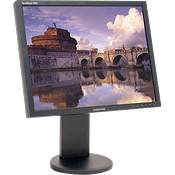Having worked as desktop support technician for quite some time I’ve seen my share of dead hardware. But what happened yesterday just blows my mind. My workhorse laptop had decided to have a sabbatical for the few days, so its main hard drive got that notorious “click of death” sound. What was even worse is that the secondary hard drive (where all the data stored – exactly in expectation that two drives can’t die at the same time) was dead too. Lost about a month worth of work (since last backups) and about three months worth of e-mails (no biggie, everything important is saved in three Gmail accounts).
While definitely not having a best evening of my life I’ve called Lenovo and asked for a replacement hard drive. However, the second hard drive would still need to be ordered separately, as it wasn’t in the original configuration. Since I also own a very small X61s, I have decided to treat myself to a little better option. I ordered 30GB MLC solid state hard drive for X61s, while the hard drive that’s in there now will become a secondary in my main laptop.
Of course, it isn’t the fastest nor the best drive out there, but I am just not ready to spend $600 for a hard drive. Going with a cheaper drive would not yield an ultimate speed boost, but should help with productivity.
So far I am running fine after half a dozen tweaks and adjustments for Windows XP to get more “solid-state friendly”. There’s usually plenty of resources available, depending on the make and model of the SSD. However, the following have been observed:
- reading is lightning fast. Ditch paging file – and system boots and shuts down in less then 30 seconds.
- writing is slow. Get rid of writing, set up a RAM drive or secondary HDD for browser/system caching or page file.
- no more worry about shaking. I used to be worried about opening laptop on the bus – no more!
- extended battery life. Depending on your usage and initial battery state you may get some boost in battery life. My X61s reports an extra hour on 9-cell battery.
- less heat, less noise. There are no moving parts, so there’s not much to get the noise from. Might get a little hot, but I hear fan starting a lot less now.
Overall, I can state that I am very happy with the replacement. Recently I’ve added more memory to my laptop (so that I am running 3GB under Windows XP SP3 32-bit), then gave up 1 gig for RAM drive for paging and cache.
Using cheap SSD in servers, desktops or general purpose laptops isn’t, probably, worth a hassle, but for my “on-the-run” checking e-mails/logs/sites it is more then adequate.
 Last week I started searching for a new LCD monitor. As strange as it may seem I am used to seeing web sites on laptops’ LCD screens. so I was looking for 4:3 ratio monitor with 1600×1200 pixels resolution. I was already aware that not a single laptop manufacturer sells laptops with 4:3 screen ratio less the ultra portables, like
Last week I started searching for a new LCD monitor. As strange as it may seem I am used to seeing web sites on laptops’ LCD screens. so I was looking for 4:3 ratio monitor with 1600×1200 pixels resolution. I was already aware that not a single laptop manufacturer sells laptops with 4:3 screen ratio less the ultra portables, like